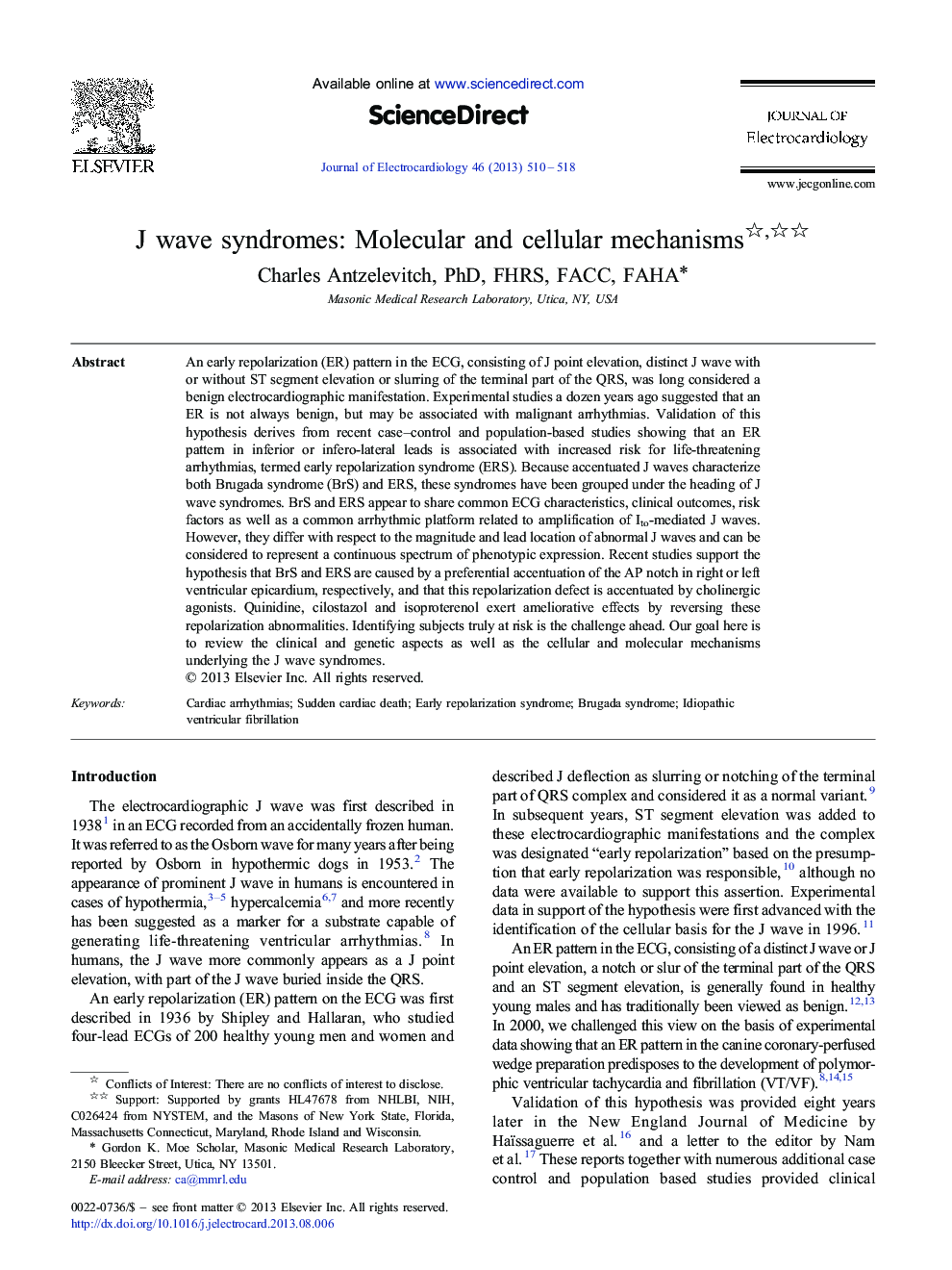| Article ID | Journal | Published Year | Pages | File Type |
|---|---|---|---|---|
| 5986682 | Journal of Electrocardiology | 2013 | 9 Pages |
An early repolarization (ER) pattern in the ECG, consisting of J point elevation, distinct J wave with or without ST segment elevation or slurring of the terminal part of the QRS, was long considered a benign electrocardiographic manifestation. Experimental studies a dozen years ago suggested that an ER is not always benign, but may be associated with malignant arrhythmias. Validation of this hypothesis derives from recent case-control and population-based studies showing that an ER pattern in inferior or infero-lateral leads is associated with increased risk for life-threatening arrhythmias, termed early repolarization syndrome (ERS). Because accentuated J waves characterize both Brugada syndrome (BrS) and ERS, these syndromes have been grouped under the heading of J wave syndromes. BrS and ERS appear to share common ECG characteristics, clinical outcomes, risk factors as well as a common arrhythmic platform related to amplification of Ito-mediated J waves. However, they differ with respect to the magnitude and lead location of abnormal J waves and can be considered to represent a continuous spectrum of phenotypic expression. Recent studies support the hypothesis that BrS and ERS are caused by a preferential accentuation of the AP notch in right or left ventricular epicardium, respectively, and that this repolarization defect is accentuated by cholinergic agonists. Quinidine, cilostazol and isoproterenol exert ameliorative effects by reversing these repolarization abnormalities. Identifying subjects truly at risk is the challenge ahead. Our goal here is to review the clinical and genetic aspects as well as the cellular and molecular mechanisms underlying the J wave syndromes.
